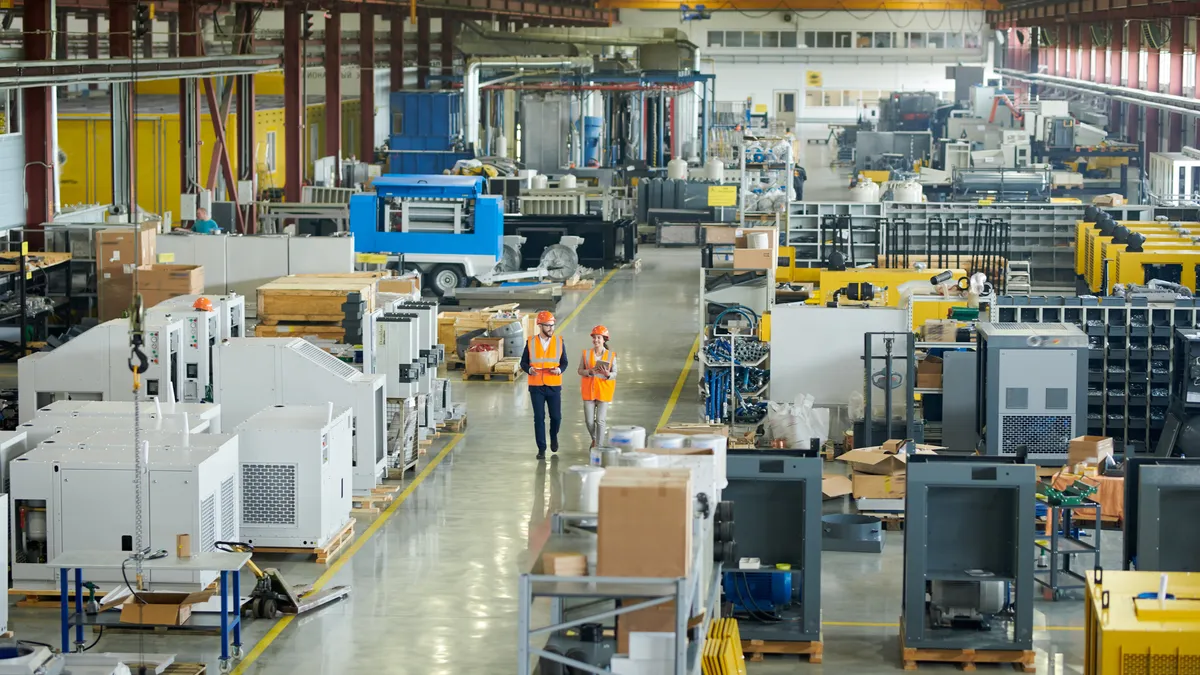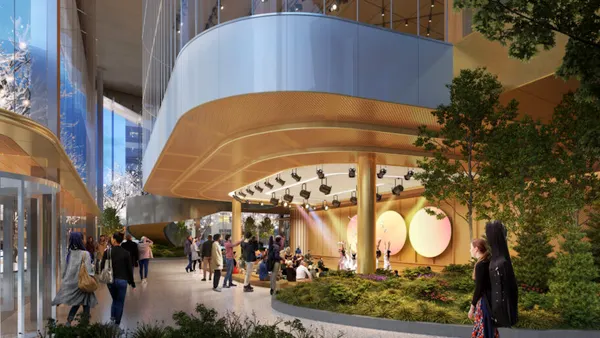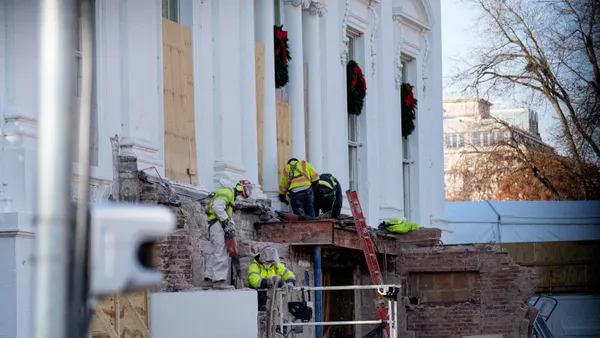Dive Brief:
- U.S. industrial real estate markets saw lower leasing activity, a continued decline in absorption and heightened vacancy rates in the first quarter of 2024, but the sector expects to see an uptick in deliveries, demand and rental rates through the end of the year, according to JLL’s Q1 2024 industrial outlook.
- The market’s vacancy rate inched up to 6.1%, rising 40 basis points quarter over quarter. Approximately 27.9 million square feet of space was absorbed in the first quarter, marking the sixth consecutive quarter of declining absorption, the report says. Rental rate growth slowed but remained positive, growing 8.2% year over year to $9.94 per square foot.
- Amid a slowdown in deliveries and a lack of new construction, 87.1% of the 362.3 million square feet of assets under construction are expected to be delivered by the end of 2024. Increasing tenant inquiries and pent-up demand are also expected to drive leasing activity in the coming quarters. “Supply shortages in some markets could be a reality in 2025 and 2026,” JLL says, noting that any supply shortage “could reignite rental rate growth due to intensifying competition between occupiers.”
Dive Insight:
Asking rates for industrial space have shot up nearly 55% nationally since 2020, as occupiers conduct portfolio reviews and focus on cost optimization, operational efficiency and strategic location opportunities, according to the report. Tenants of midsize properties in particular will be urged to take action on these portfolio optimization efforts, with 69.7% of expiring leases over the next 36 months in the range of 150,000 to 250,000 square feet. The next largest segment, comprising leases of 250,000 to 500,000 square feet size, makes up 20.3% of the total lease expirations in that time.
For the time being, new leases are outpacing renewals, constituting 57% of all leasing activity. Tenants are also more inclined to reduce rather than increase their space, opting to lease less space with the option of expanding later, instead of leasing too much space at one time. This trend has driven a 68% quarter-over-quarter decrease in lease expansions. However, renewal activity reached “its highest level in recent quarters,” accounting for 30.3 million square feet of leasing activity, JLL says.
While sublease availability rose 13.8% quarter over quarter, a large portion of sublease space is being marketed only for the short term, with occupiers planning to eventually reoccupy that space.
“Tenants are carefully considering their options at lease expiration, weighing the efficiency of renewing in their current space against relocating for a better rate, despite associated relocation and build-out costs,” the report says. “Some industrial occupiers continue to consolidate their footprints as they reevaluate their warehouse and fulfillment centers to boost efficiency, cut costs, and enhance productivity.”
Absorption is expected to increase for the duration of 2024, causing rental rates to remain positive, per the report. As a vast majority of the overall construction pipeline is completed and absorbed by year-end, vacancy rates are expected to start dropping again.
This vacancy decline will also be impacted by continued growth in manufacturing requirements related to national reshoring efforts and regionalization trends, which are set to be “one of the core drivers of industrial fundamentals over the long-term,” according to the report. This momentum, and capital investments funded by the Inflation Reduction Act, drove 11.7 million square feet in manufacturing and supply chain-related leasing activity, which grew 68% from the last quarter. This growth was similar to that seen in the computing, communications, technology and media industries, which grew leasing volume 69% quarter over year, and lagged behind the energy and utilities sector, which grew 96% during the same period.
“Supply chains will look to capitalize on these opportunities, seeking strategically located facilities that can accommodate localized manufacturing, efficient distribution and resilient inventory management systems,” JLL says.
Groundbreakings — or the start of construction on new buildings and developments — slowed for the sixth consecutive quarter, with less than 40 million square feet breaking ground, bringing the total construction pipeline to 362.3 million square feet.
The lack of new construction starts is largely limited to new speculative products, with owner-user and build-to-suit endeavors making up 26.2% of all assets under development in the first quarter of 2024, compared with 16% a year ago. Potential development sites are contending with power availability constraints, which the report says can “significantly impact their suitability and attractiveness.”












